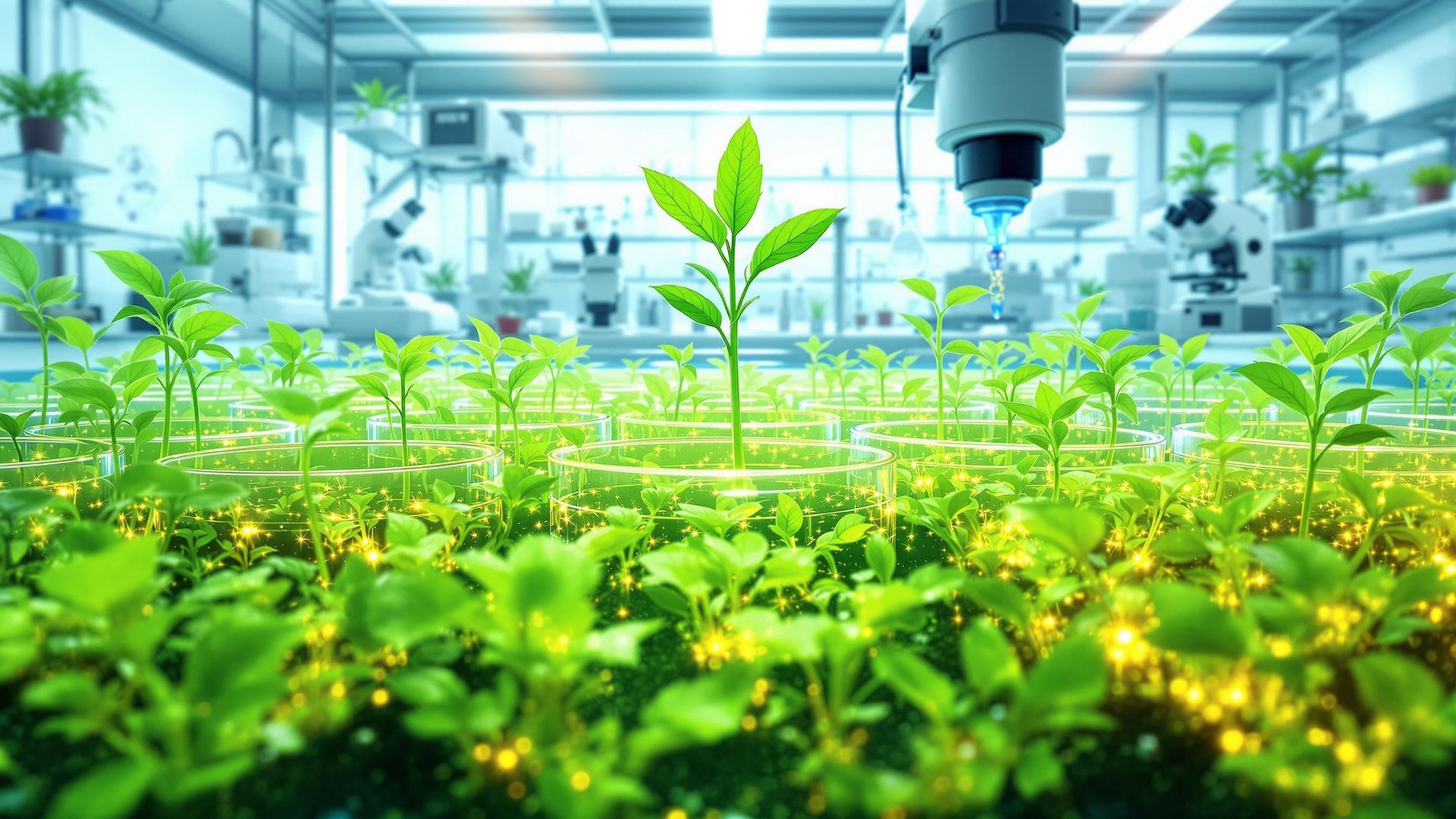TL;DR
Micropropagation is a biotechnology technique that rapidly multiplies plants from small tissue samples under sterile, controlled conditions. It produces genetically uniform, disease-free plants and supports large-scale agriculture, horticulture, and conservation.
🌿 What Is Micropropagation?
Micropropagation is a plant tissue culture method used to produce large numbers of identical plants from small pieces of tissue or cells. This process takes place in a sterile, controlled environment using nutrient-rich media and plant hormones that stimulate root and shoot growth.
By adjusting conditions such as light, temperature, humidity, and hormone balance, growers can produce strong, healthy plantlets ready for transplanting. The technique ensures rapid, reliable, and disease-free propagation--a cornerstone of modern agriculture and conservation.
🌾 Why Micropropagation Matters
- 🌱 Fast, large-scale plant production from limited parent material
- 🧬 Genetic uniformity, ensuring consistent traits and quality
- 🌼 Disease-free, high-value stock for food and ornamental crops
- 🌍 Conservation of endangered species, restoring biodiversity
- 💧 Efficient use of space and resources through bioreactor scaling
Bioreactors and automated culture systems now make it possible to produce thousands of healthy plants simultaneously, supporting commercial nurseries and sustainable farming operations.

🧬 A Brief History
Plant tissue culture began in the early 1900s, but it wasn't until the 1960s-1970s that micropropagation protocols were refined for commercial use. Techniques like root induction, shoot regeneration, and somatic embryogenesis revolutionised horticulture, enabling mass production of crops and ornamentals with desired traits.
🌼 Common Micropropagation Techniques
1. Tissue Culture
This is the foundation of micropropagation. Small plant sections, or explants, are sterilised and placed on nutrient media containing plant growth regulators (PGRs). By controlling environmental conditions and media composition, growers can regenerate thousands of identical clones that are true to the parent plant.
2. Somatic Embryogenesis
Here, embryos form from somatic (non-reproductive) cells rather than seeds. This allows for rapid cloning of plants that are difficult to propagate naturally. Somatic embryogenesis is especially valuable for crops, ornamentals, and tree species where uniformity and performance are critical.
🌻 Large-Scale Micropropagation
As demand grows for high-quality plant material, large-scale micropropagation systems have evolved from lab prototypes to industrial solutions. Through automation, robotics, and bioreactor technology, modern facilities can scale production efficiently while maintaining sterility and uniformity.
Key Strategies for Scaling Up
- Optimise temperature, light, and humidity for rapid plantlet growth
- Automate nutrient delivery and sub-culturing to minimise error
- Use custom media blends to match each crop's nutrient requirements
- Implement strict quality control to prevent contamination and genetic drift
Benefits of Large-Scale Propagation
- High throughput with consistent quality
- Cost-effective, eco-friendly production
- Reliable supply of uniform plants for reforestation, floriculture, and agriculture

🌿 Factors That Influence Success
Environmental Control
Precise regulation of light intensity, temperature, and humidity is essential. Even slight variations can impact growth or cause tissue stress. Stable conditions also improve compatibility during micrografting and acclimatisation.
Nutrient Media Composition
The nutrient medium provides all macro- and micronutrients, vitamins, and growth regulators needed for plant development. pH, hormone ratios (auxins/cytokinins), and sterilisation procedures determine propagation efficiency and plantlet health.
🌾 Applications of Micropropagation
Agriculture & Horticulture
- Rapid multiplication of high-yield, disease-free crops
- Production of uniform ornamental plants for commercial nurseries
- Use of auxins and cytokinins to optimise rooting and shoot formation
- Controlled hardening of seedlings for transplant success
Conservation & Biodiversity
Micropropagation supports conservation by reproducing rare or endangered species from limited specimens. Plants grown in vitro are shielded from environmental stress and pathogens, ensuring genetic preservation and enabling reintroduction into natural habitats.
⚙️ Hormones & Plant Growth Regulators (PGRs)
How Hormones Drive Micropropagation
Plant hormones like auxins (IAA, IBA) and cytokinins (BAP, kinetin) regulate cell division and differentiation. By adjusting concentrations, researchers can control root initiation, shoot proliferation, and overall plantlet formation.
Experimentation & Monitoring
Each species responds differently to hormone levels. Careful experimentation and ongoing monitoring are required to achieve balanced growth and prevent abnormalities or somaclonal variation.
🌱 Acclimatisation -- From Lab to Greenhouse
After in-vitro growth, plantlets must adapt to external conditions. Gradual humidity reduction, increased airflow, and light exposure prepare them for transplanting. Proper acclimatisation prevents shock, promotes strong root systems, and ensures survival outside sterile lab conditions.
⚠️ Common Challenges
- Contamination from microbes can destroy cultures
- Genetic instability (somaclonal variation) may affect quality
- Species-specific responses require fine-tuned protocols
- Scaling difficulties can arise from inconsistent media or equipment
Regular quality control and sterilisation protocols are essential to maintain success in commercial and research environments.
🌿 Conclusion
Micropropagation is one of the most powerful tools in plant biotechnology -- enabling mass propagation, genetic preservation, and sustainable production. As automation and bioreactor technology advance, micropropagation continues to evolve, bridging science and sustainability for the future of agriculture, horticulture, and conservation.

❓ Frequently Asked Questions
- What is micropropagation?
- It's a tissue culture technique that multiplies plants in a sterile environment, producing identical, disease-free clones.
- How does micropropagation differ from traditional propagation?
- It's faster, cleaner, and allows for genetic consistency across thousands of plants -- something traditional cuttings can't achieve.
- Why are hormones important in micropropagation?
- Hormones like auxins and cytokinins control root and shoot growth, enabling precise control over plant development.
- Can micropropagation help conserve endangered species?
- Yes. It allows for the safe regeneration of rare plants while maintaining genetic diversity and preventing extinction.
- What are the main challenges in micropropagation?
- Contamination, genetic instability, and species-specific growth requirements. Careful monitoring and sterile technique are key to success.
Looking to Start Your Own Tissue Culture Lab?
Doctor Blooms supplies advanced lighting, nutrient media, and consultations.
📞 01279 501857





